◀ CINEMA ▶
SINGAPORE ELECTRIC SOUL SINGAPOUR 1: UN PEU DE GÉOGRAPHIE ET D'HISTOIRE
SINGAPOUR 1: UN PEU DE GÉOGRAPHIE ET D'HISTOIRE
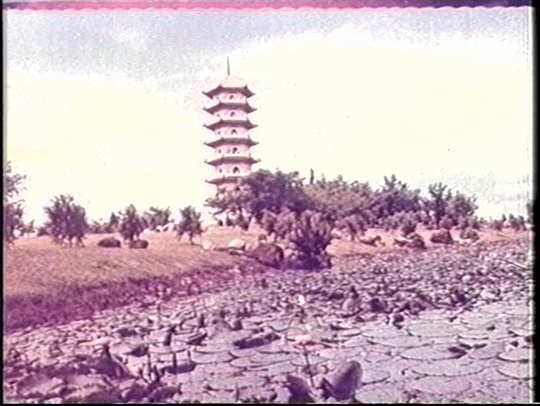 Rajendra Gour, Sunshine Singapore, Singapore, 1968-72, 6’47
Rajendra Gour, Sunshine Singapore, Singapore, 1968-72, 6’47
Shot on 16mm film, Sunshine Singapore shows Singapore’s beginnings as an independent state. The film intersperses sunny views of iconic landmarks with accelerated footage of busy streets. The film captures the hopes of Gour, born in 1940 in India, as a young filmmaker, as well as those of Singapore as a young nation.
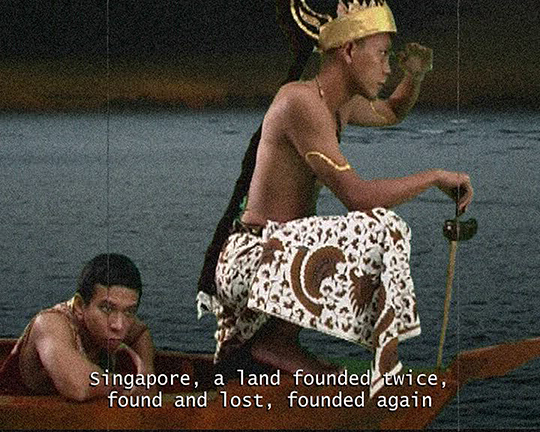
Ho Tzu Nyen, Utama – Every name in history is I, Singapore, 2003, 21’48
The video Utama – Every name in history is I follows the 14th century figure of Sang Nila Utama and his imagined relationships with leaders from the region. Testifying to Utama's early presence and experiences on the island, these leaders reinforce his identity as the original founder of the Kingdom of Singapore. The video collapses linear time by employing the same person to play explorers from other historical periods. These explorers include Christopher Columbus, Vasco da Gama, Zheng He and Sir Thomas Stamford Raffles, the British colonial statesman of Singapore in the early 14th century.
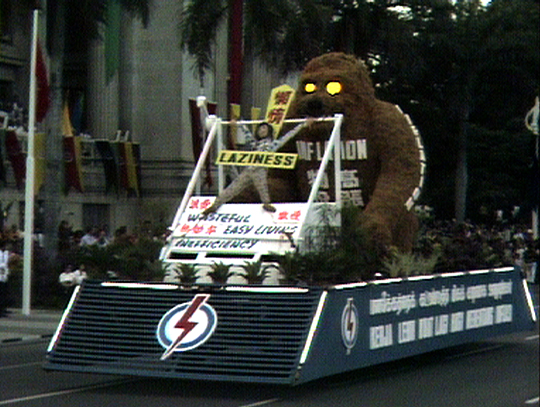
Tan Pin Pin, 9th August, Singapore, 2006, 7'35
9th August is a video installation that was commissioned by the National Museum of Singapore for the History Gallery in 2006. It reflects on the National Day Parade that takes place every year on 9 August in commemoration of Singapore's independence from Malaysia. To create the film, Tan looked through 41 years of footage of national day parades to find patterns in the state's representation of itself. Over the years, personalities change but many rituals remain the same.
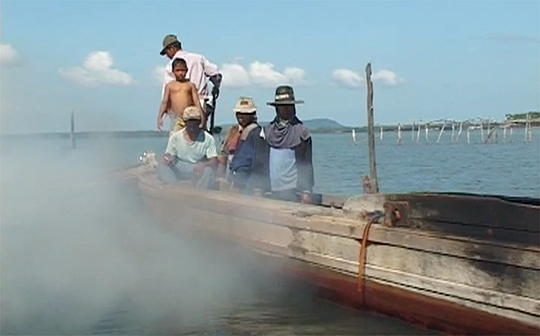
Zai Kuning, RIAU, Singapore, 2003, 29’45
RIAU captures the beautiful journey of Zai Kuning as he delves into the world of the Orang Laut or sea gypsies who live in a nomadic fishing village around the islands of Riau in the Straits of Malacca, located in the middle of Singapore and Sumatra. Zai Kuning spends his time living with a family of Orang Laut, weaving his personal narratives with the struggles the sea gypsies face. RIAU reveals the dislocation of histories through the lives of the disappearing Orang Laut which leaves an uncertain sense of where home truly is.
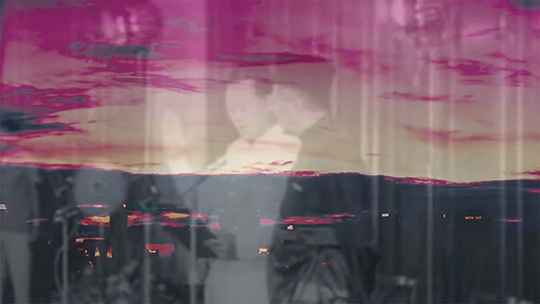
Kevin Foong, Sunsets of another world, Singapore, 2010, 1’
"Singapore seems so distant now, like another world altogether since my return to New York. This experimental work is a reminder of the beauty and oddity of the country." – Kevin Foong, 2014
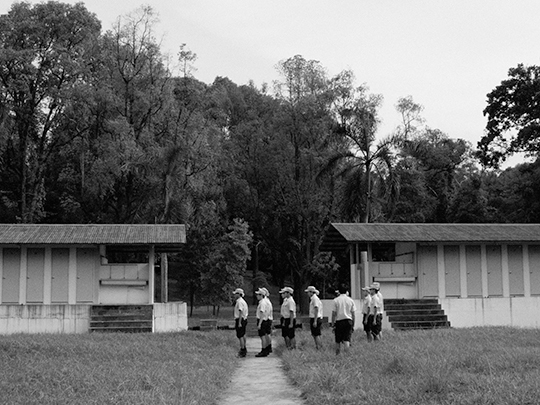
Jiekai Liao, Bukit Orang Salah, Singapore, 2013, 20’45
The tiny St. John's Island in the south of Singapore was where Singapore's colonial founder Sir Stamford Raffles docked his ship upon arrival. At various points in its history, the island served as a quarantine centre for immigrants and pilgrims returning from Mecca, a penal colony for political detainees and secret society leaders, and a sleepy holiday resort. Unlike neighbouring islands however, St. John's was never fully developed. It occupies an in-between space, the vestiges of its history scattered around the land – out-of-bound markers and fences, deserted paths and dilapidated housing. Its indeterminacy stands in sharp contrast to Singapore, where land use is meticulously planned to fulfill economic and social functions. In this film, St. John's Island – otherwise known as “Bukit Orang Salah” (approximately “Hill of Wrong People” or “Hill of Misfits”), a nickname coined by the people who were quarantined there – becomes a site of and for reflection, prompting questions about our history, heritage and identity.
SINGAPOUR 2: LABOUR OF LIFE
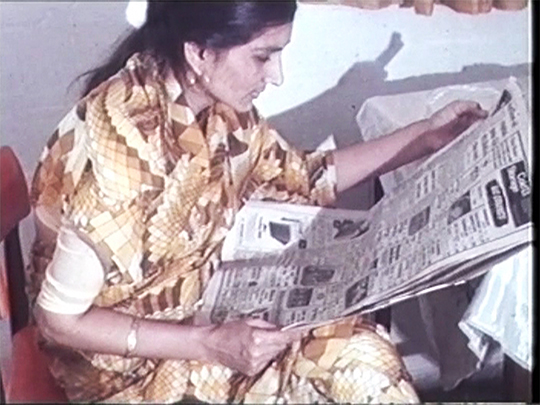 Rajendra Gour, Labour of Love - The Housewife, Singapore, 1978, 17’
Rajendra Gour, Labour of Love - The Housewife, Singapore, 1978, 17’
This short film examines the role of the Asian woman, in particular the role of the housewife within the realm of the home and the family. It features the boundless work that a housewife has to accomplish in a day in order to run a household and to care for her husband and children. The film is an early feminist take on the misconception of the non-economic value of the stay-at-home mother and wife, whose contribution to society is often underrated.
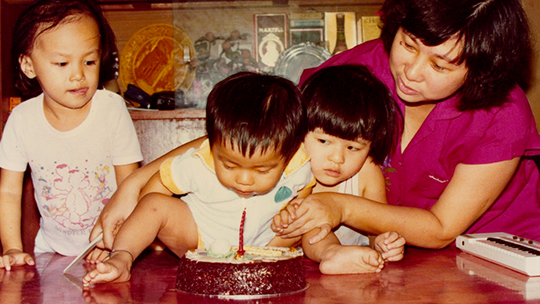
Loo Zihan, Autopsy, Singapore, 2008, 7’16
A documentation of a conversation with my mother.
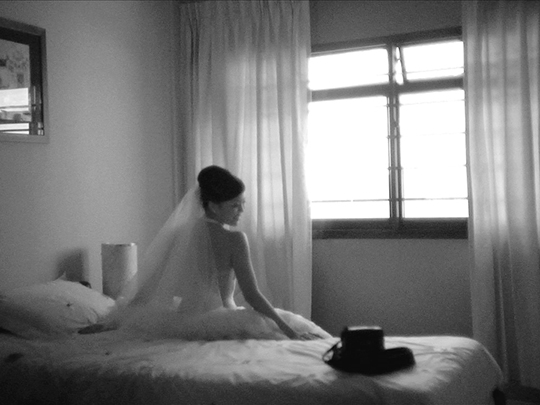
Jiekai Liao, Before the wedlock house, Singapore, 2012, 14’58
It is the day of her marriage. The bride spends the morning in her room, dressing up and waiting for the groom to pick her up. Her filmmaker cousin documents these last moments before she leaves the room of her childhood.
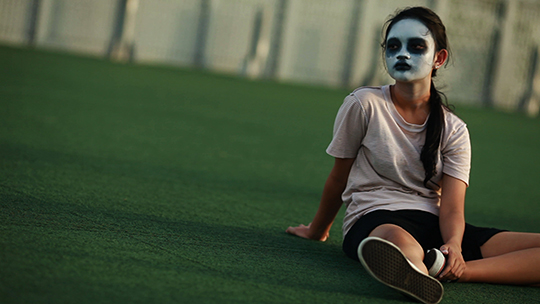
Sookoon Ang, Exorcize me, Singapore, 2013, 3'13
Exorcize me is a photography, videography and live performance project addressing coming-of-age anxiety, teenage alienation and the confusing phase between childhood and adulthood. The title speaks about the unease within one’s own skin and the yearning to get rid of new-fangled fears and unfamiliar emotions. The goth makeup, baby language, school setting and uniforms are juxtapositions of reality and fiction – an interior world brought out to the exterior
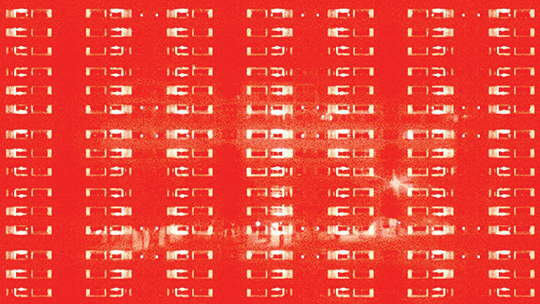
Wesley Leon Aroozoo, Peep, Singapore, 2010, 4’52
Peep explores the irreversible effects of individual events and how these events can impact family units. The film reflects on the personal experience of Aroozoo’s former neighbours, who were tricked by "loan sharks" (people or bodies who lend money at extremely high interest rates) into borrowing significant sums of money. In the film, Aroozoo uses colour filters and voyeuristic perspectives to create a sense of foreboding.
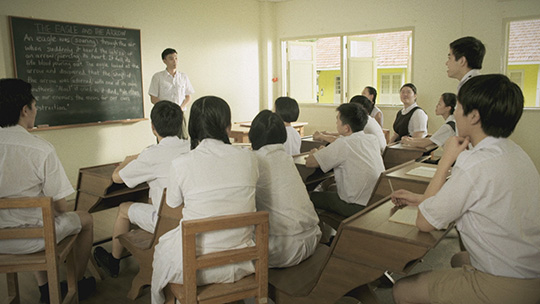
Jason Soo, A short film on the May 13 generation, Singapore, 2014, 19’25
A short film on the May 13 generation is based on historical events that took place in Singapore in 1954, when 800 students occupied The Chinese High School to seek exemption for classmates affected by a new conscription law. During the occupation, the students conducted their own classes and organised themselves for communal life. The film depicts a possible day during these three extraordinary weeks.
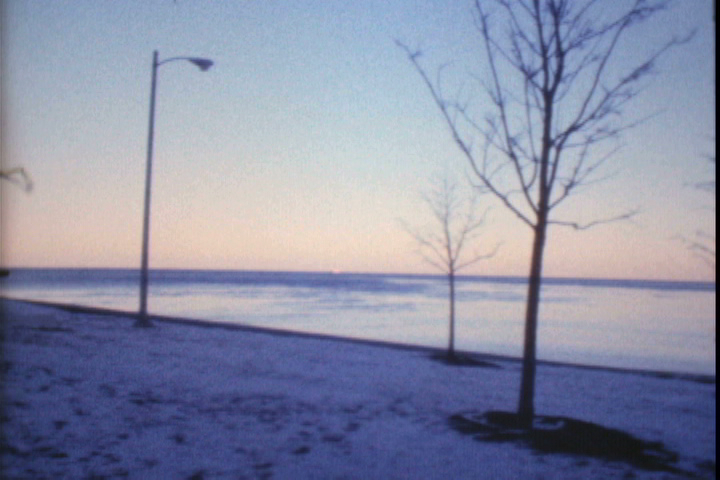
Jiekai Liao, As winter escapes me, Singapore, 2011, 9’50
For three years of my life between 2005 and 2008, I lived in the windy city of Chicago where the winter months are long, cold and dark. Upon returning to the tropical region, I unknowingly ventured into the last surviving village in metropolitan Singapore. The contrasting temperatures, colours and smells saturate this experience.
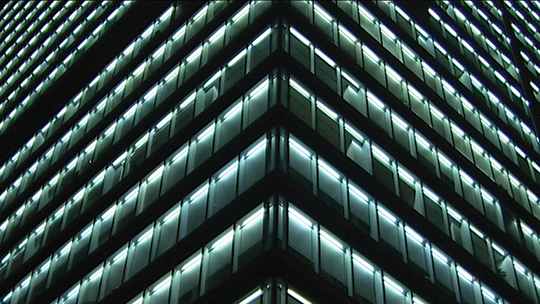
Eva Tang, Solitary moon, Singapore, 2010, 2’
Inspired by a quote from the novel The great Gatsby (1925), Eva Tang revisited some of her unused film footage to make this film. Shot in a single night, the film shows neon lights and interiors of office buildings from various perspectives. These views spark contemplation about the nature – and pressures – of contemporary working life.

Nelson Yeo, Chinatown. Electric soul #01, Singapore, 2013, 3’42
Chinatown. Electric soul #01 is part of Yeo’s ongoing Electric soul project that explores the mechanisation of human souls in urban settings. The film features scenes of local people wandering languorously around Chinatown at night.
SINGAPOUR 3: "ENCOUNTERS WITH ART OFTEN SEEM LIKE A MOMENT OF FICTION" (CHAN KENT)
 Rajendra Gour, Eyes, Singapore, 1967, 6'
Rajendra Gour, Eyes, Singapore, 1967, 6'
Eyes is an experimental film that explores the pain and suffering in the world caused by a lack of understanding amongst mankind. All of this is viewed through the “eyes” of the people of the world.
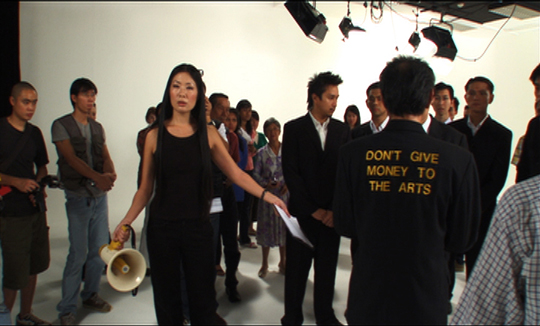
Ho Tzu Nyen, 4 x 4 - Episode 3: Tang Da Wu - The most radical gesture, Singapore, 2005, 22'44
Tang Da Wu – The most radical gesture is the third part of Ho Tzu Nyen's television series 4x4 – Episodes of Singapore art in which four pivotal Singaporean artworks are re-staged and re-examined. Tang’s Don’t give money to the arts was a performance that took place unofficially, perhaps even illegally, during the opening of the Singapore Art Fair in 1995, one year after the Singaporean state had imposed regulations upon performance art that amounted to a de facto ban. The ban took the form of denying all public funding to performance art and an outlawing of all performances without fixed scripts. Tang approached the guest of honor, the former President of Singapore, and asked for his permission to put on a suit with the words “Don’t give money to the arts” stitched in bright yellow across its back. After wearing the suit, Tang handed him a card on which these words were inscribed: “Dear Mr President, I am an artist. I am important. Yours sincerely, Tang Da Wu.”
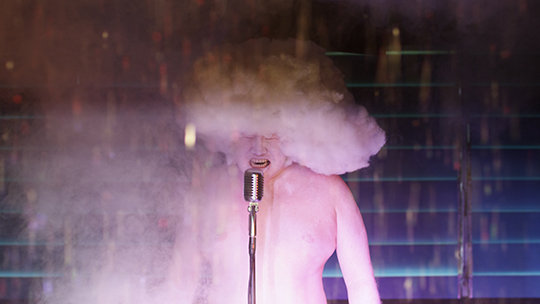
Ho Tzu Nyen, The cloud of unknowing, Singapore, 2011, 28'
The cloud of unknowing references the title of a 14th century medieval primer, intended for aspiring monastics who were seeking to practice religious devotion. Written in the tradition of mystic Christian theology, it describes the sensations of uncertainty and doubt in the search for the divine "as it were a cloud of unknowing" standing between the aspirant and God, a state of "darkness" and lack of clarity that however is a necessary part of the journey. Ho Tzu Nyen's artwork looks at the subject of the cloud – as an art historical object that "hovers" in the background of landscapes; a subject that channels notions of the unrepresentable and emptiness in Chinese landscape paintings, where the cloud is generated through the paradoxical practice of letting the radiance of untouched scroll shine through; the cloud as embodying in its transient form the notion of change; its signification in the experience of illumination – as vehicles for elevation, boundary markers of a different world and symbols of transcendence; as exercises for the imagination and screens for projection.
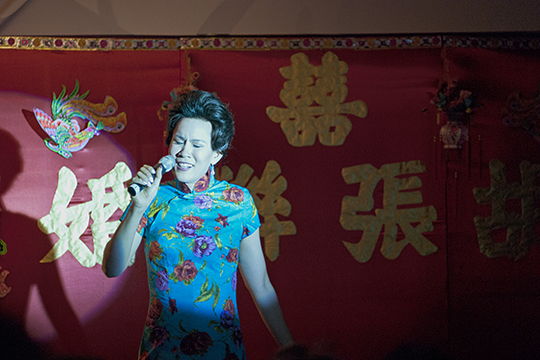
Ming Wong, Art must be beautiful, Singapore, 2011, 9’26
Ming Wong's performance Art must be beautiful was held during a debate organised by Intelligence Squared as part of Hong Kong Art Fair 2011. The artist's debate motion is derived from one of Marina Abramovic's key works Art must be beautiful, artist must be beautiful (1975), which challenges the notion of beauty, the limits of the body and the possibilities of the mind.
Without informing anyone beforehand, Ming Wong turned up at the debate as the character played by Maggie Cheung in Wong Kar-Wai's In the mood for love – a beautiful art object and a sex symbol of Hong Kong – and proceeded to deconstruct his alter ego.
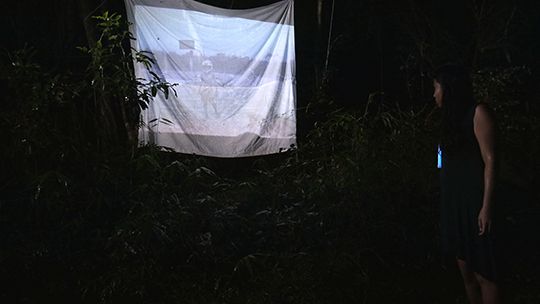
Kent Chan, Image of the dark, Singapore, 2013, 13’32
There is a film screening happening in a forest at night with a single woman as its audience. There is no hint to the purpose of the screening and the presence of a woman; both simply appear to be, occupying the same space and time. Deep in the forest, stories unfold as images and light animate the darkness, joining the two in a nocturnal dance.
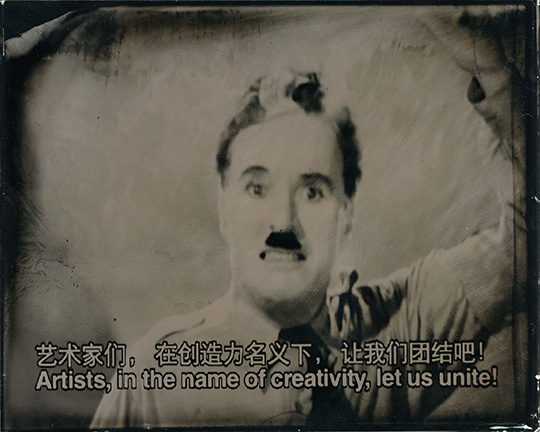
Urich Lau, The orators: Monologues, Singapore, 2011-2013, 7’24
The video contains scenes appropriated from the films The great dictator (Charlie Chaplin, 1940), Citizen Kane (Orson Welles, 1941) and Dr. Strangelove (Stanley Kubrick, 1964). Appropriated monologues by the key actors, in new personas representing different viewpoints of the arts – a critic, a curator, and a museum director – are re-contextualised with text in the form of subtitles reflecting various issues and problems in the contemporary visual art today. The main language is in English and tagged with the native language of the country that is shown in, to create a representation of the context with the appropriate language used.
SINGAPOUR 4: HOMAGE TO TAN PIN PIN
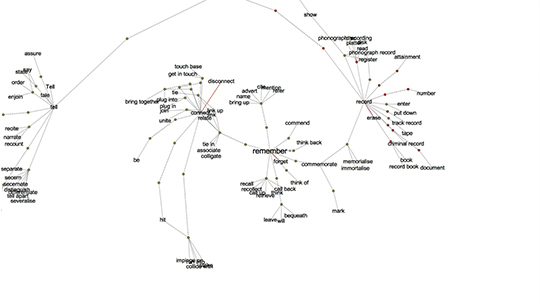
Tan Pin Pin, Thesaurus, Singapore, 2012, 6’21
A dance of words inspired by a thesaurus. Thesaurus was commissioned by the Singapore Memory Project.
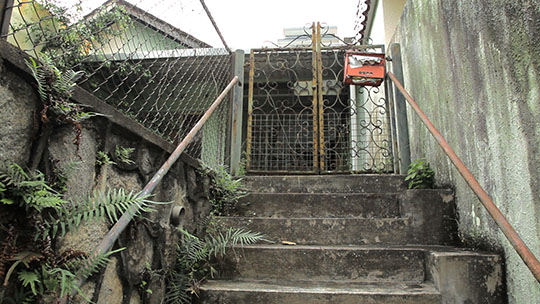
Tan Pin Pin, The impossibility of knowing, Singapore, 2010, 11'31
The impossibility of knowing was born out of the humble realisation that there is no way one can know everything significant about Singapore. The documentary visits and films locations where crimes or accidents have taken place, long after the events have happened to find out if these places can transcend time to engender their own significance. They cannot. These places only have meaning in relation to individuals or communities. And meaning has to be teased out with research and further questioning. Moreover, one locale can bear infinite shades of meaning for different people.
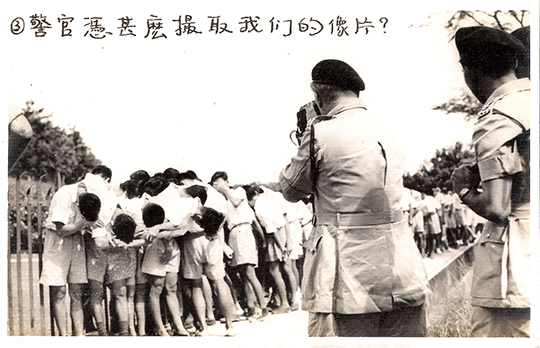
Tan Pin Pin, Invisible city, Singapore, 2007, 58'37
Invisible city is a documentary about documenteurs. The director interviews photographers, journalists, archaeologists and people propelled by curiosity to find a city for themselves. The documentary conveys how deeply personal their search is and how fragile histories are, hanging on only through their memories and artefacts. Interwoven with the interviews are never-seen-before footage and photos of Singapore culled from their personal archives. In Invisible City, you witness the atrophy of memory, you see a city that could have been.


























